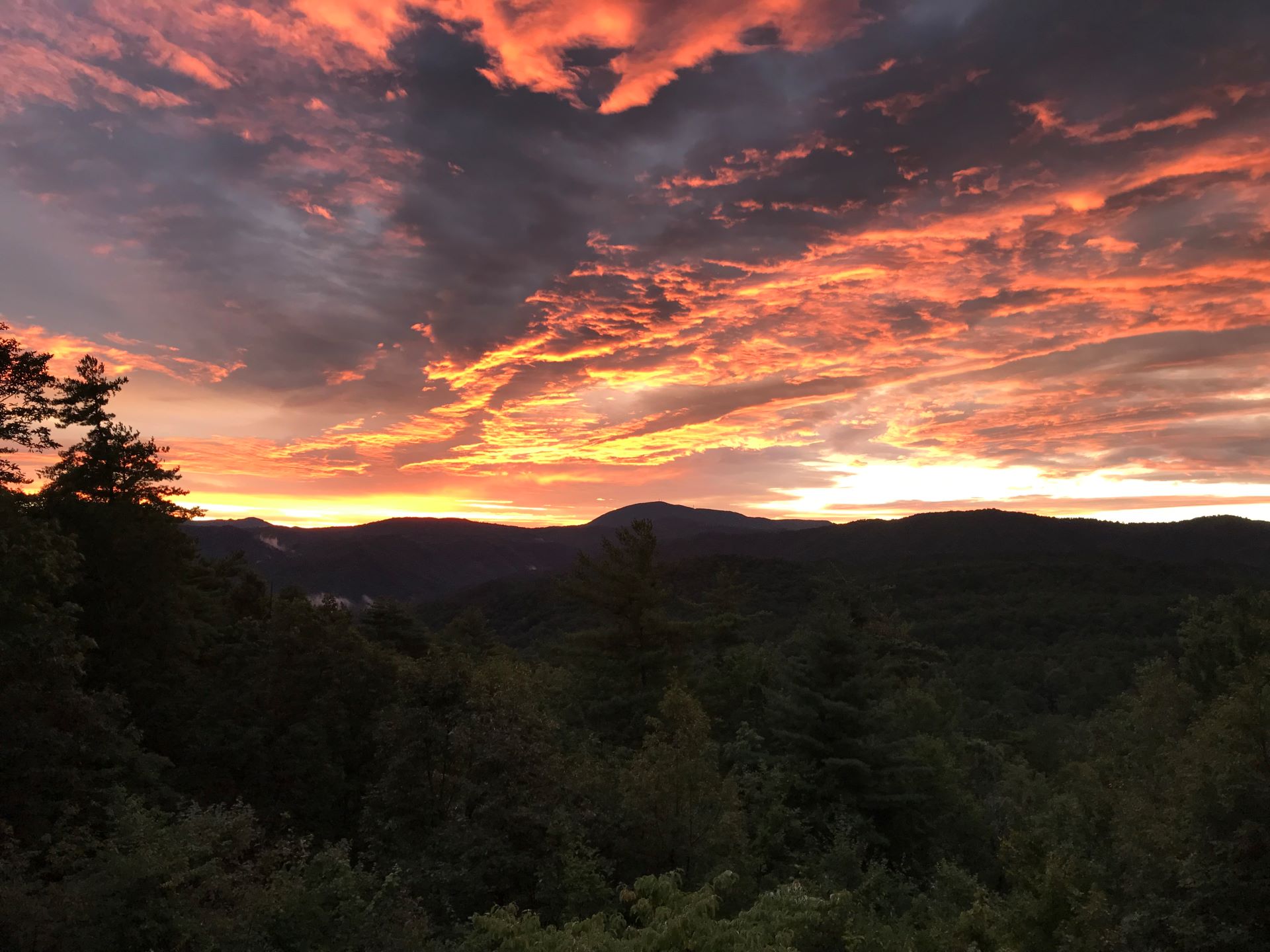Last week’s topic of mushrooms and their far-reaching rootmass of mycelia generated the most responses I’ve received on a newsletter topic since I started publishing six months ago.
A nearby friend texted me photos of mushrooms spotted on that day’s morning walk and invited me for a mushroom walk in her woods, where she walks several times a day. We went mushroom-spotting Friday evening.
“Once you start seeing them you see them everywhere,” Kathleen said, as we walked, heads down, along the old logging roads in the nearby forest.
The cinnabar chanterelles were out to be noticed
The stars of this walk were the dainty, bright red cinnabar chanterelles. Small colonies of the perfect mini-mushrooms less than 1-inch tall were scattered along both sides of the road, like dropped Christmas ornaments. Again and again Kathleen pointed out less colorful, small, beige or white mushrooms, or small round balls that blended into the leaf litter.
Quite intentionally, Kathleen has not sought out the names or identifications of the other mushrooms she notices. She doesn’t walk in the forest to advance her education, she said, and she has no interest in eating them. “I just want to be here.”
That satisfying sense that your mere presence and awareness of a natural place is enough is one of the least-mentioned benefits of the act of noticing, I’ve discovered.
Going into the woods, along the beach or on the river walk to notice what might be there to be noticed at that moment is the unspoken reward. It’s the opening to the joy, wonder, awe and delight we find in Nature.
Have you noticed?
Noticing, and doing more noticing, has been a recurring theme lately.
“What did you notice?” is the standard first question in nature-connected coaching sessions. It’s such a rich, powerful question.
I just finished writing a free email course that invites the reader to go outside and notice sights, sounds and smells they’ve overlooked before.
And the meditation app and course Waking Up just released a new series called “The Art of Noticing” by Rob Walker.
“The scientist, the entrepreneur, the photographer, the coach, you name it—each relies on the ability to notice that which previously seemed invisible. There’s no creativity without attention.” – Rob Walker
“I never noticed that before…”
Noticing may not seem like a human activity that deserves this much attention. Unfortunately, that’s exactly the point.
The digitally distracted don’t notice much of anything at all about their environment or the non-human, analog, non-screen world around them.
“Place-blindness,” not paying attention to the details of the places you’re living in or passing through, is now shockingly common, along with “plant-blindness,” not paying attention to the plants around you. It’s all just a green blur.
For 140 million Americans, if it’s not on screen it’s not real and doesn’t matter. These are Native Digitals, Millennials and Gen Zers, born between the early 1980s to as recently as the 2010s. They’d rather look at a picture of a sunset than put down the screen and experience the sunset.
Is there an answer?
How do we get people to notice the natural world? How do we get people to put down their phones?
My mushroom-walking friend is wrestling with these questions. Her granddaughter had a meltdown when Kathleen asked her to imagine “What if the internet went down?”
“I couldn’t live!” the 19-year-old shouted.
This teen-ager is exactly the kind of tech consumer that Project Liberty is concerned about. Project Liberty is a $100 million initiative launched two years ago to advance “the responsible development of the internet of tomorrow – designed and governed for the common good.”
Project Liberty is an international non-profit organization mobilizing a global alliance of technologists, academics, policymakers and citizens to build a more responsible approach to technology development, including a more open internet infrastructure.
I’m glad to know some of the most prestigious and brightest minds in academics, research, technology and policymaking are bringing major dollars and muscle to address this meltdown in society.
One small notice at a time
But we shouldn’t leave it up to them to solve this disconnection from the natural world. Now that we’re aware we’re also responsible.
It may not seem like much, but keep noticing and share what you notice. Every notice counts.
And just like with the mycelium, which is listening to us, we don’t know what Nature notices when we notice Nature.
Go play outside!
Marsha
P.S. New here? Join us.
+3 Resources for You
Project Liberty – Kids figure prominently on the site. Shout out to Trudi for sharing this one.
Art of Noticing – I don’t use it daily but I’m almost done with the introductory course in Waking Up and enjoy it very much. You have to be a member to access the Art of Noticing series. Email me and I can send you 30 days free.
Wellbeing in Winter: Testing the Noticing Nature Intervention During Winter Months – There’s a psychological intervention called Noticing Nature Intervention (NNI) that still works during the winter months.
Fantastic Fungi: The Mushroom Movie– A critically acclaimed documentary from director Louie Schwartzberg. The clips on the website are enough to pull me in. Shout out to Kathleen for sharing, who said, “It’ll blow your mind!”
2 Questions for You
Reflections, questions and ideas to break the digital spell.
1st Q: Have you developed the art of noticing throughout your day? Tell me more.
2nd Q: What one thing you noticed recently brought you joy?
Hit reply and let me know what you discovered this week. I’ll use some of your feedback in next week’s newsletter (first name only.)
Reflection Feedback
From Marjan: A Dutch company developed a coffin made (grown) from mushrooms: The Loop Living Cocoon. It ensures that you don’t just decompose but are actually re-integrated with nature and give back to the Earth.
From Linda: Thanks for another great issue. My favorite plant on the forest floor: Ferns
From Cathy: Wow! This was fascinating.
From Sue: Love this one! How fascinating. Here on the farm, I am always blown away by what looks like fairy rings of mushrooms. They seem to be stimulated in part by my zero-turn lawn mower, perhaps something about the disturbance of a turn, or the extra light created? Even though I’ve been here over 10 years, sometimes I get surprise mushrooms I have never seen before. Once these strange orange cup-like mushrooms appeared. Your timing is lovely since the very first puff balls showed up just the other day. I had mushrooms on my mind.
From Heather: When I go for hikes in the Sam Houston National Forest (walking distance from my home), I enjoy seeing the blankets of southern wood fern spanning as far as the eye can see beneath the pines. But for the bare feet? Clover. The soft coolness of clover is a wonder. Not to mention the added benefit of searching for the beloved 4-leaf clover!
From Kathleen: I do not forage. There are numerous potential lookalikes. You need an expert and to be 100% sure your ID is correct.
1 Action for You
One small step to start the change.
Walk outside (tech-free) for 10 minutes. Soften your gaze and see what catches your attention. What do you notice?
Hit reply, let me know how it goes and I’ll include feedback in next week’s newsletter.
Nature View

“If you truly love nature, you will find beauty everywhere.” – Vincent Van Gogh
